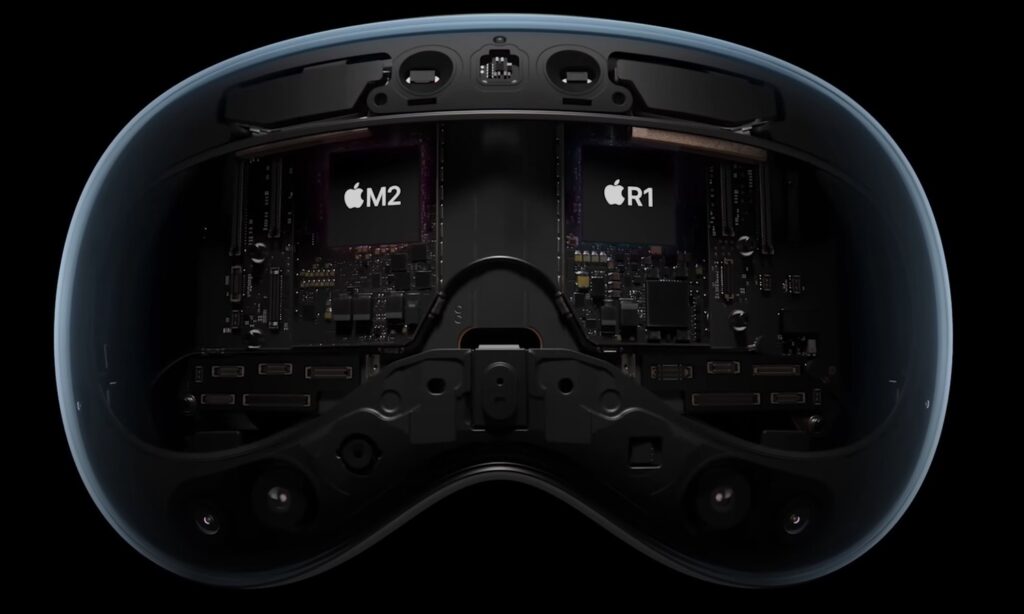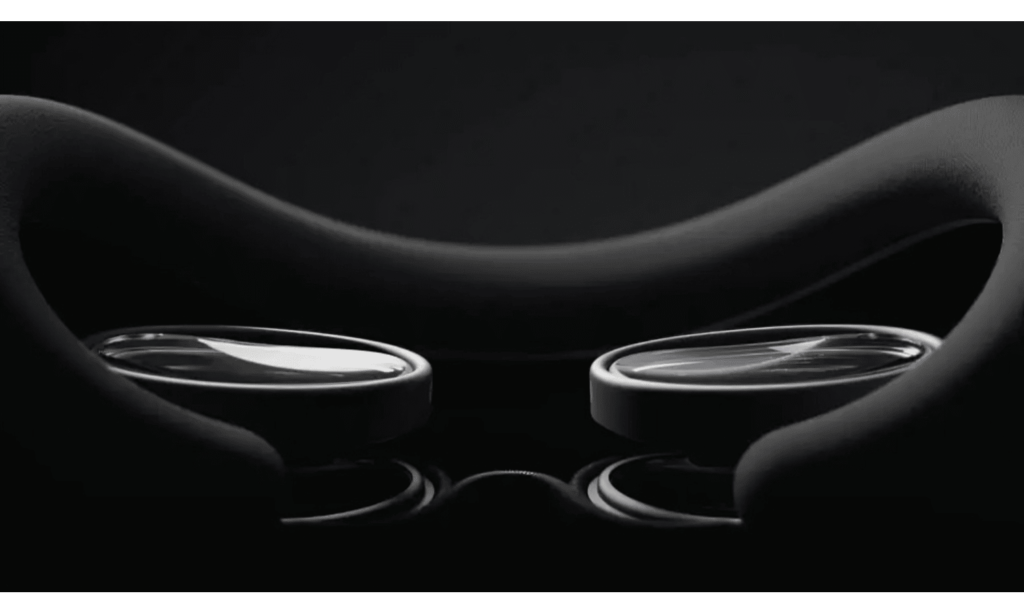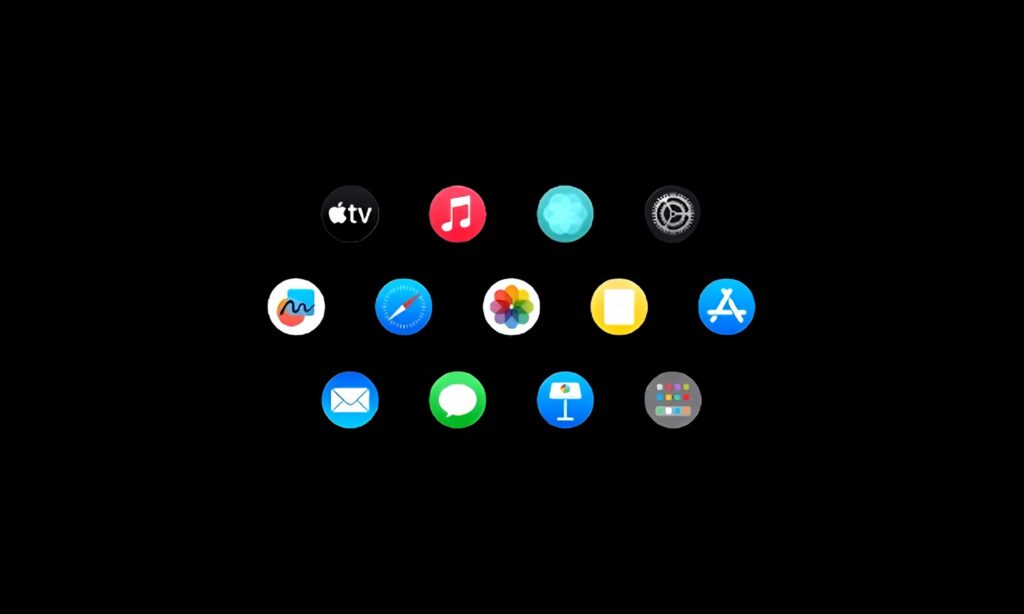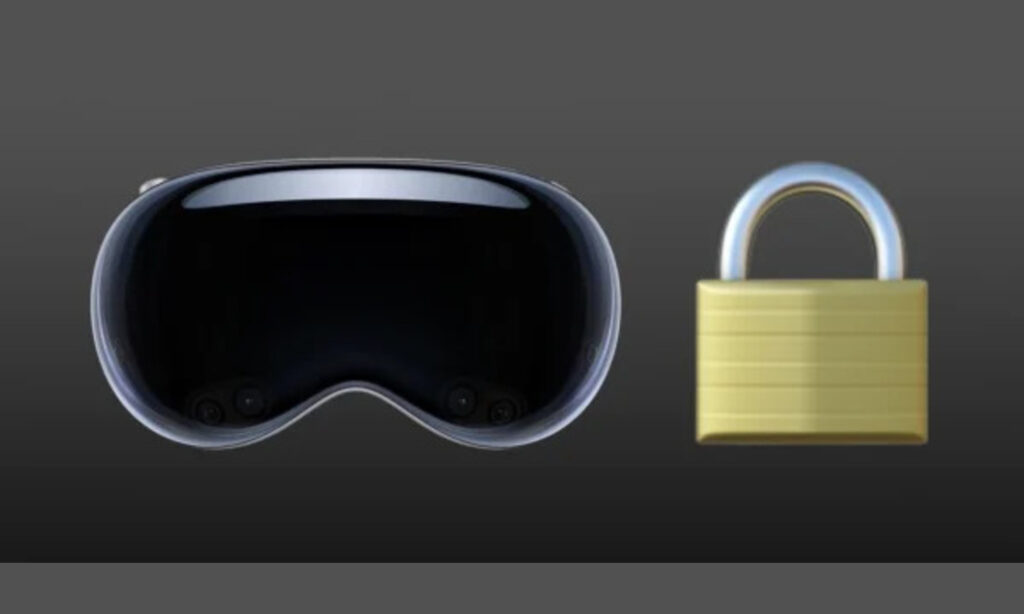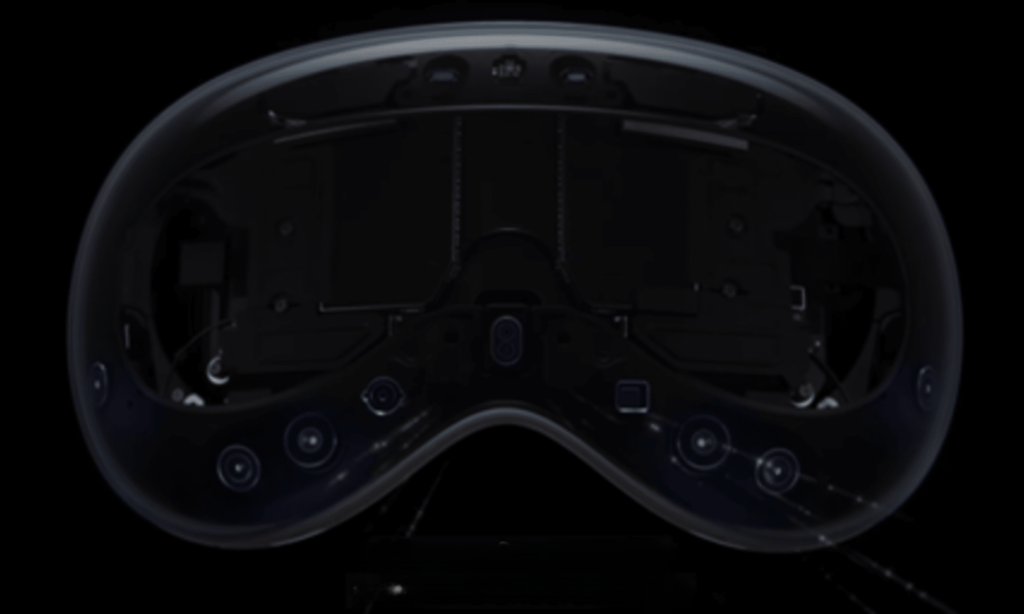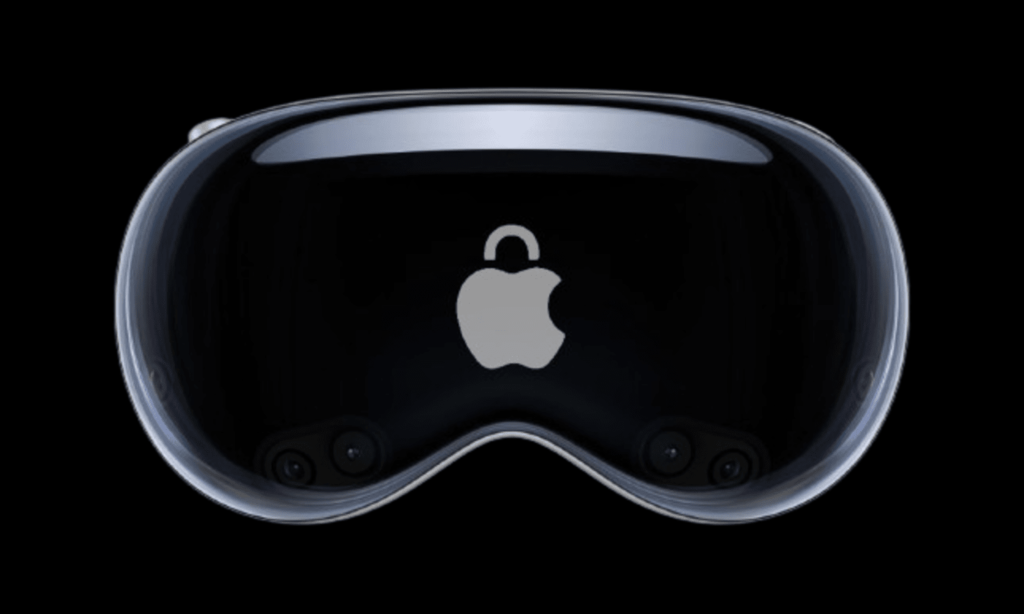“Gesture Recognition Sensors” in Apple Vision Pro are a cutting-edge breakthrough in the field of human interaction and interface design. These sensors enable the device to detect and interpret hand movements, allowing users to interact with their devices intuitively and naturally. In the context of Apple Vision Pro, gesture recognition sensors are critical to improving the user experience by enabling a wide range of additional features and functions that change the way users interact with their devices. The device could be equipped with gesture recognition sensors to identify the user’s hand movements and gestures. These sensors provide intuitive interaction with augmented reality information, allowing users to manipulate virtual items, navigate menus, and conduct activities with natural motions. Advanced machine learning algorithms use sensor data to accurately recognize and interpret a wide range of motions.
Understanding the Gesture Recognition Sensors:
Gesture recognition sensors are a type of sensor that detects and interprets human hand movements, finger gestures, and body gestures. These sensors use a variety of technologies, including computer vision, depth sensing, and machine learning algorithms, to accurately analyze and interpret gesture data. In the context of this high-tech device, gesture recognition sensors use a combination of hardware and software to detect and interpret gestures precisely and responsively.
The functionality of Apple Vision Pro:
In the virtual reality system, gesture recognition sensors are completely integrated into the device’s hardware and software environment, allowing for a wide range of enhanced features and functionalities that improve user interaction and productivity.
Technology:
Gesture Recognition Sensors are specially designed that detect and interpret human gestures such as hand, finger, and body movements. These sensors use a range of technologies to precisely catch and analyze gestures, which include:
- Depth Sensing: Uses depth-sensing technologies, such as Time-of-Flight (ToF) sensors or structured light sensors, to generate 3D maps of the surrounding environment and detect the positions and movements of objects, including human hands and body parts.
- Computer Vision: Utilizes computer vision techniques and machine learning models to analyze visual data acquired by cameras and extract meaningful gestures and motions from the scene.
- Infrared Sensing: Infrared sensors detect changes in infrared light induced by hand movements, enabling for accurate and reliable gesture detection even in low-light circumstances.
- Electromyography (EMG): Measures the electrical impulses produced by muscle contractions during certain hand movements, allowing gesture identification based on muscle activity.
Applications:
Gesture Recognition Sensors have a variety of uses across businesses and areas, including:
- Consumer Electronics: Providing gesture-based controls and interactions for smartphones, tablets, smartwatches, and other wearable devices.
- Gaming: Creating immersive and intuitive gaming experiences with gesture-based controls and interactions in game consoles, virtual reality (VR), and augmented reality (AR) devices.
- Automotive: Integrating gesture recognition technology into vehicle entertainment, navigation, and driver assistance systems to enable hands-free operation and interaction.
- Healthcare: Supporting gesture-based controls in medical devices, rehabilitation systems, and healthcare applications to allow patients and healthcare professionals to operate and interact without using their hands.
- Retail and Hospitality: Using gesture-based interfaces in retail kiosks, digital signage, and interactive displays to engage customers and improve the user experience.
- Industrial Automation: Gesture Recognition Sensors are used in industrial automation systems to provide hands-free control and operation of machinery, robotics, and equipment. Gesture-based interfaces increase efficiency and safety in manufacturing and production settings.
- Education and Training: Gesture Recognition Systems are used in educational contexts to provide interactive learning experiences, virtual classrooms, and training simulations. Gesture-based interfaces improve engagement and interactivity in educational material delivery.
- Entertainment and Media: Gesture Recognition Sensors are built into entertainment and media devices, allowing for gesture-based navigation, content selection, and control in smart TVs, streaming devices, and home entertainment systems.
- Public Spaces: Gesture Recognition Systems are used in public places like airports, museums, and retail stores to power interactive displays, information kiosks, and wayfinding systems. Gesture-based interfaces improve user engagement and involvement in public settings.
- Accessibility: Gesture Recognition Sensors are essential in accessibility technology, allowing people with disabilities or mobility limitations to engage with devices and interfaces via gestures and movements. Gesture-based interfaces promote accessibility and inclusion for users with a variety of needs.
Advanced Features:
- Intuitive Navigation: Gesture recognition sensors enable users to browse menus, apps, and information with simple hand gestures, without the need for physical buttons or touch input.
- Gesture-Based Controls: Users can perform a variety of activities, such as scrolling, zooming, and swiping, with intuitive hand gestures, increasing efficiency and convenience of use.
- Interactive Gaming: Gesture recognition sensors enhance immersive gaming experiences by allowing users to control gameplay and interact with virtual surroundings using their natural hand gestures.
- Augmented Reality Interaction: In augmented reality (AR) applications, gesture recognition sensors allow users to interact with virtual objects and environments using gestures, increasing immersion and realism.
- Accessibility Features: Gesture-based controls offer an alternate input method for individuals with mobility disabilities, making it easier to explore and communicate with their devices.
- Enhanced User Experience: Gesture Recognition Sensors improve the user experience by reducing the need for physical buttons or touch inputs, resulting in a more immersive, efficient, and ergonomic method to interact with devices and apps.
- Multi-Modal Interaction: Gesture Recognition Sensors can supplement other input methods, such as voice commands, touch inputs, and physical buttons, giving consumers a more flexible and varied way to interact with devices and apps.
- Intuitive Interaction: Gesture Recognition Sensors allow people to engage with devices and interfaces naturally and intuitively, employing hand, finger, and body gestures to control and manipulate digital content.
- Contextual Awareness: Gesture Recognition Sensors can include contextual awareness, which allows devices to perceive motions in the context of the user’s surroundings and task. For example, a gesture made while viewing a video may have distinct purposes than a gesture made when perusing a web page.
- Adaptive Learning: Some Gesture detection Systems use adaptive learning algorithms, which can modify and personalize gesture detection depending on specific user preferences and behavior patterns. This allows for more accurate and personalized gesture recognition, suited to each user’s specific gestures and movements.
- Multi-User Interaction: Advanced Gesture Recognition Systems provide multi-user interaction by allowing many users to control and interact with devices and interfaces via gestures. This capability is very beneficial in collaborative situations like interactive displays and consoles for gaming.
- Fine-Grained Gestures: Gesture Recognition Sensors can detect and understand fine-grained gestures with great accuracy, such as subtle hand movements or elaborate finger gestures. This allows users to carry out complex actions and interactions with precision and accuracy.
- Environmental Adaptability: Gesture Recognition Sensors are meant to respond to a variety of environmental factors, including lighting, background clutter, and ambient noise. Advanced algorithms and sensor fusion techniques ensure consistent performance and reliability across a variety of settings.
Specifications:
- Sensor Type: Depth sensors, cameras, infrared sensors, and electromyography sensors are some of the sensor types that can be used.
- Technology: Uses computer vision algorithms and machine learning models to recognize and understand gestures.
- Accuracy: Gesture Recognition Sensors are highly accurate in detecting and interpreting gestures, with little latency and errors.
- Range: Sensors have predetermined ranges for detecting gestures, which can range from a few centimeters to several meters depending on sensor technology and arrangement.
- Sampling Rate: Sensors have high sampling rates, allowing them to capture motions in real time at frequencies ranging from tens to hundreds of frames per second.
- Integration: The device’s operating system and software development kits (SDKs) are seamlessly integrated, allowing developers to create gesture-based interactions in their programs.
- Power Efficiency: Optimized power usage to reduce the impact on battery life.
- Security: Built-in privacy protections ensure that user data and gestures are safe and secure.
- Form Factor: Gesture Recognition Sensors are available in a variety of form factors, including embedded sensors in devices, independent modules, and peripherals. The form factor is determined by the application’s specific integration requirements.
- Processing Power: Advanced Gesture Recognition Systems demand a lot of processing power to analyze and interpret gesture input in real-time. High-performance processors, GPUs, or dedicated hardware accelerators may be used to meet the computational needs of gesture recognition algorithms.
- Latency: Gesture Recognition Sensors strive to reduce latency, ensuring that gestures are recognized and responded to quickly. Low-latency systems offer a smooth and natural user experience, especially in time-critical applications like gaming or virtual reality.
- Robustness: Gesture Recognition Sensors are intended to be durable and resistant to changes in input data, environmental circumstances, and human behavior. Rigorous testing and validation procedures assure consistent performance under a variety of operational circumstances.
- Power Consumption: Sensors are designed for power efficiency to reduce energy consumption and extend battery life, especially in mobile and wearable devices.
- Integration Flexibility: Gesture Recognition Sensors provide for easy integration with a variety of hardware platforms, operating systems, and software frameworks. This allows for easy integration with a wide range of devices and apps, including smartphones, tablets, PCs, and IoT devices.
Challenges:
- Ambiguity in Gestures: Gestures can be difficult to interpret precisely because of their ambiguity and variability in individual movements. Differentiating between deliberate and unintended motions necessitates advanced algorithms and contextual awareness.
- Environmental Factors: Environmental considerations such as lighting, background clutter, and noise levels can all have an impact on Gesture Recognition Sensor effectiveness. Adapting to various ambient circumstances while avoiding interference is critical for robust and dependable gesture recognition.
- User Adaptation: Users may require time to adjust to gesture-based interfaces, particularly if they are used to traditional input techniques such as touch or keyboard input. Providing straightforward feedback and instruction might help users get more comfortable with gesture interactions faster.
- Privacy Concerns: Gesture Recognition Sensors may cause privacy concerns, particularly in public or shared spaces where users may feel uncomfortable being viewed or recorded. Implementing privacy-preserving techniques and transparent data processing processes is critical to user confidence and approval.
Future Trends:
- Enhanced Sensing Technologies: Future Gesture Recognition Systems may use advanced sensing technologies like radar, LiDAR, or neural interfaces to capture more detailed and subtle motions. These technologies provide improved accuracy, range, and reliability in gesture recognition.
- Context-Aware Interaction: Context-aware gesture recognition systems can read gestures in the context of the user’s activities, intents, and environment. This allows for more intelligent and adaptive interactions with devices and interfaces depending on contextual cues.
- Integration with AI and Machine Learning: AI and machine learning approaches will play an important role in improving gesture detection capabilities by allowing systems to learn and adapt to users’ preferences, behaviors, and gestures over time. This enables more tailored and responsive interaction experiences.
- Wearable Gesture Recognition: Wearable devices incorporating Gesture Recognition Sensors will allow for hands-free interaction and control of devices and applications, providing convenience and mobility in a variety of scenarios including fitness tracking, healthcare monitoring, and immersive experiences.
Ethical Considerations:
- Data Privacy: Collecting and processing gesture data poses privacy concerns since it can reveal sensitive information about user’s actions, behaviors, and preferences. Transparent data-gathering procedures, informed permission, and strong security measures are critical for maintaining user privacy.
- Bias and Fairness: Gesture Recognition Systems must be built and trained in an unbiased and fair manner, with no discrimination based on race, gender, or physical abilities. Addressing bias in training data and algorithms is critical to guaranteeing fair results for all users.
- Accessibility and Inclusivity: Gesture-based interfaces should be accessible and inclusive, catering to users with a wide range of requirements, skills, and preferences. Providing different input methods and customization choices ensures that gesture interactions are available to all users.
- Surveillance and Control: Gesture Recognition Systems used in public places or regulated situations may generate issues about surveillance and control. Balancing the benefits of gesture-based interfaces against possible threats to individual autonomy and freedom of movement necessitates careful consideration and oversight.
Finally, gesture recognition sensors in Apple Vision Pro represent a significant improvement in user interaction and interface design, allowing for easy and natural engagement with the device. These sensors combine depth-sensing technologies, computer vision algorithms, and machine learning models to let users browse, control, and interact with their devices with simple hand movements. Gesture recognition sensors, with their high precision, responsiveness, and seamless integration, are redefining how users interact with technology, opening up new possibilities for productivity, creativity, and accessibility. As Apple continues to innovate and push the limits of technology, gesture recognition sensors remain a key component of its vision for the future of mobile computing and interaction.
